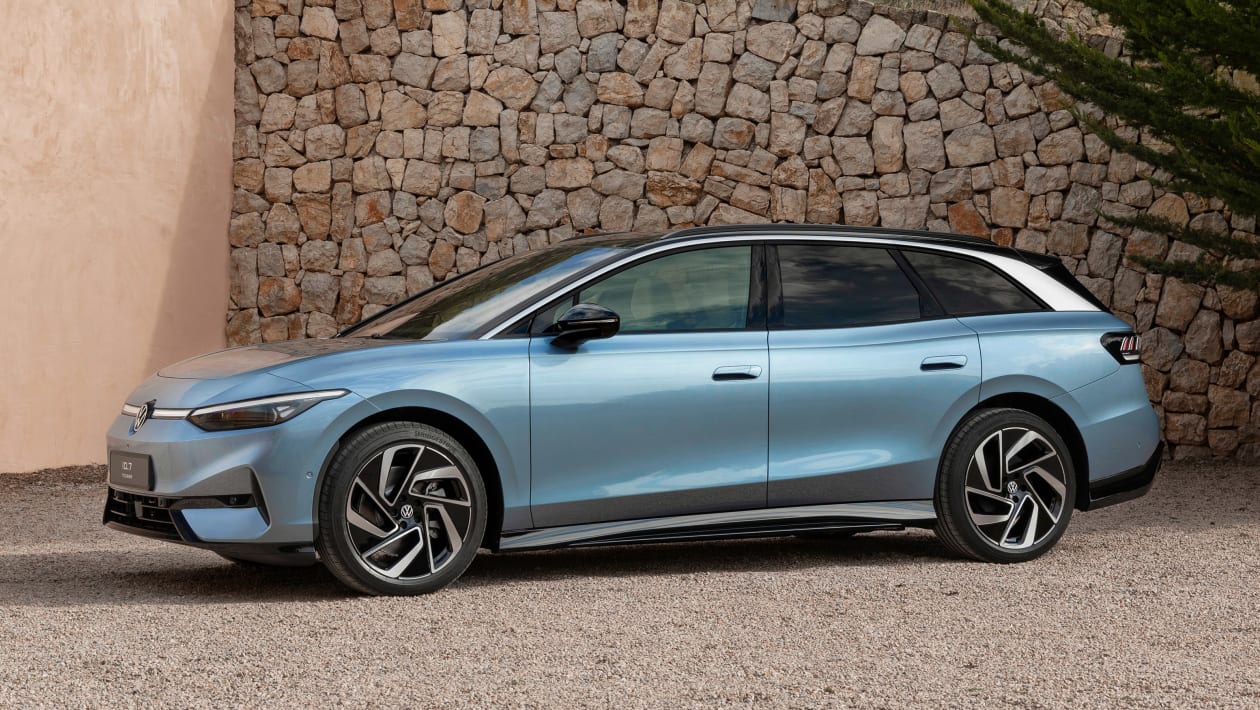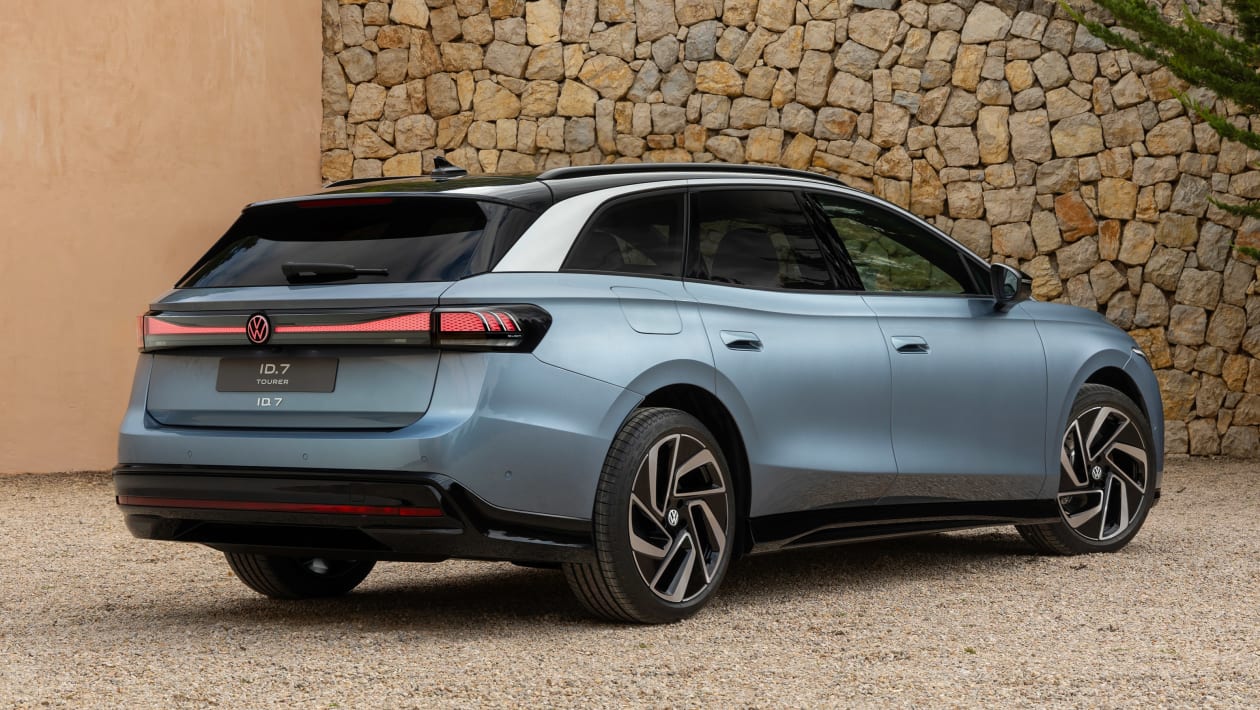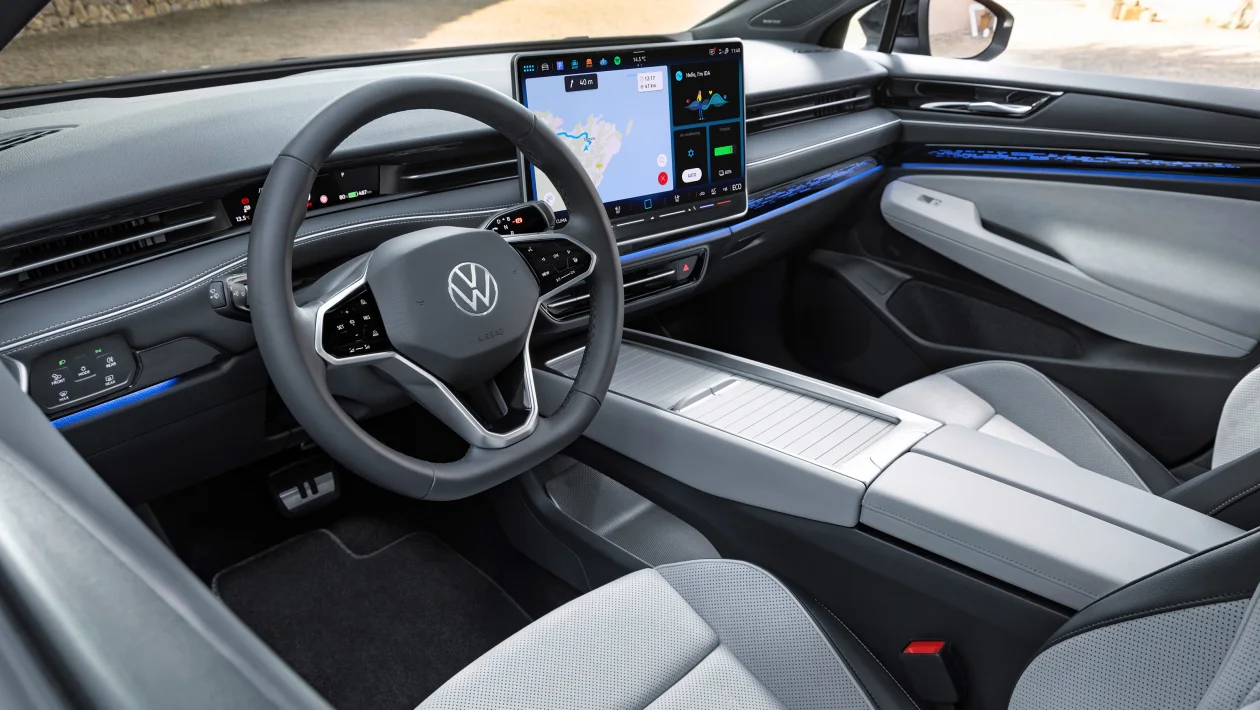A wagon version of the Volkswagen ID.7 has long been on the cards, and could well make for the most compelling electric VW yet.
This is the new Volkswagen ID.7 Tourer, wagon version of the recently launched hatchback that’s already changing perceptions of the German brand’s electric cars.
The ID.7’s most important feature is its bigger boot, which is rated at 565 liters with the rear seats in their normal position, rising to 605 liters with the seatbacks at their most upright. When folded flat, this increases to 1714 kilometers – bigger than an MG5, but shy of the latest petrol-powered Passat estate, which trumps the ID.7 by 200 liters with the seats down.
There’s further storage under the ID.7’s boot floor, but those hoping for a Tesla-style frunk will be disappointed as there isn’t one, which is generally ideal space to store the charging cables.
Fans of the ID.7’s design will like the new Tourer, as the two share the same fundamental aesthetic. The long-roof proportions help accentuate the contrast-colored roof and silver roof rails, which pair a neat tail and the same dramatic rear lighting.
The interior design is also shared with the hatchback and is widely considered a step up over VW’s other ID models in terms of design, quality, and materials. A 15-inch infotainment screen is standard on all models and features the same new user interface as the hatchback bringing much-improved usability and functionality.
As well as being faster-reacting and easier to navigate, the larger display also allows for a static climate control section at its base, and while the controversial slider switches remain, they are now back-lit and usable at night. VW will also integrate ChatGPT to underpin its new voice assistant software.
Like the hatch, the main screen is joined by a small color display mounted in front of the steering wheel, which alongside a heads-up display with augmented reality functionality, combines to create a comprehensive digital interface. VW’s also paid close attention to the materials and finishes, both of which represent a huge improvement over the quality seen in other ID models, while also adding in a few luxuries such as well-integrated ambient lighting.
Under the metal, VW’s ID.7 Tourer shares the hatchback’s underlying MEB-derived chassis, with the option of two battery packs paired with a single 282 kW motor. Kicking off the line-up is the 77 kWh car.
VW hasn’t revealed acceleration figures for either car at this stage, but we don’t expect a dramatic drop-off compared with the hatchback’s 6.5-second 0-100km/h time. That’s for the base car, of course, with the slightly heavier 86 kWh model likely to be a little slower in a straight line.
While this single motor variant is the only option for now, VW is on track to offer a twin-motor GTX variant in the near future giving the ID.7 a bit more power and all-wheel drive capability that many will find useful in colder climates. All ID.7 Tourers are also rated to pull up to 1,200 kg when fitted with the optional tow bar.
As it stands, there aren’t many comparable direct rivals, with the all-electric estate car still a rare beast on account of more popular electric SUVs. In the premium space, BMW’s new i5 Touring is considerably more expensive, yet isn’t quite as large in the rear as the VW, while Audi’s new A6 Avant e-tron is still a few months away, but will share its higher price point with the BMW. Until then, the ID.7 will have the mainstream electric estate class to itself.






